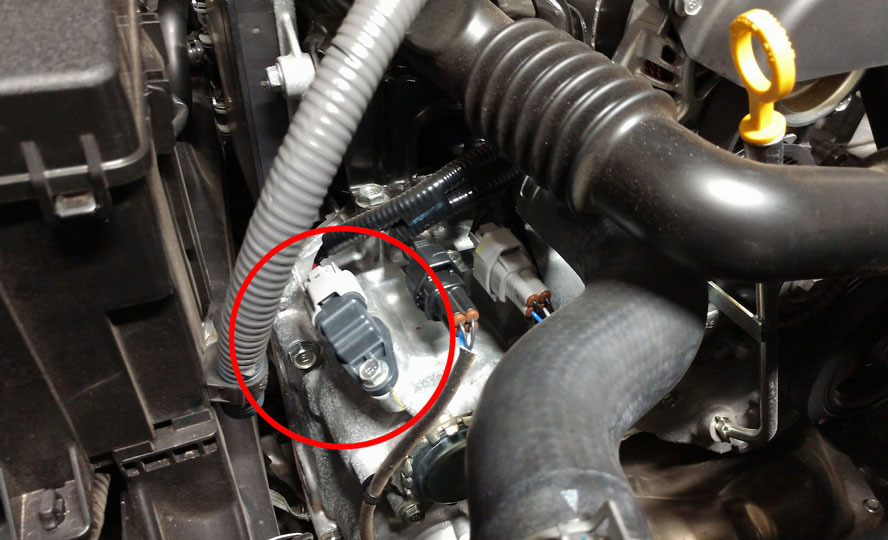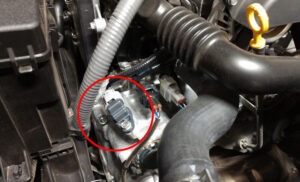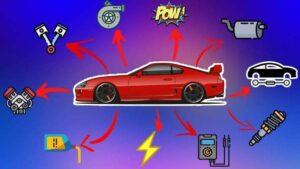
Cam Phasing and Valve-lift control Although a few tuners have modified the basic operating equipment of variable valve systems, this type of activity involves expertise on the level of sophisticated engine design and construction. For the vast majority of tuners, the actuator system itself is a given, and what might be considered for modification is the EMS control portion (though this likely involves duplicating the factory control strategy exactly when an aftermarket programmable EMS gets installed for other reasons).
The earliest variable valve systems from Honda, Porsche, and others were essentially binary. The valvetrain was in either high-rpm or low-rpm mode. Under certain conditions, the ECU
triggers a solenoid valve that supplies pressurized engine oil to a spring-loaded plunger that pushes against the camshaft drive in such a way as to increase the length of chain or belt between the
intake and exhaust sprocket to advance the intake cam relative to the exhaust cam. In the case of Honda’s original VTEC system, an early pioneer in variable-cam technology, the EMS opens (or closes) a valve that pushes into place a set of pins that lock a complement of cam followers into place for all cylinders such that an alternate more radical set of high-lift and longer-duration cam lobes comes into play to actuate the valves at higher rpm, which improves power. Honda’s three-stage VTEC system is similar to the two stage system, except that the EMS controls two binary valves, one to begin opening the second intake valve on a four-valve combustion chamber, the other to switch the intake cams to a more radical profile for both valves. So the EMS simply opens
the two electrical switches at various combinations of engine rpm and loading, and the factory hydraulics do the rest.

The other main approach to variable valve timing involves variable cam phasing. The simplest cam-phasing systems from Honda, Toyota, and GM followed BMW’s pioneering VANOS system in using a single set of cam lobes to actuate valves but allowing the EMS to dynamically change the indexing of the cams relative to the crankshaft in such a way as to amplify ram tuning effects across a wider speed range than would otherwise be possible, improving
the overall efficiency of the powerplant. Because this type of system provides a linear range of cam phasing with a lot of granularity rather than simply a “low” or “high” speed configuration, engine performance can be optimized over a wider rpm range than a binary system like Honda’s original VTEC. Engines with twin overhead camshafts allow the possibility of phasing the intake and exhaust cams independently with respect not only to crankshaft position but each other. The EMS can adjust the position of the two cams to increase exhaust duration so as to provide increased exhaust gas recirculation, to increase cylinder pressure by modifying intake cam timing, and to increase intake-exhaust cam overlap exclusively at high rpm so as to increase the ramtuning effect for more power without paying the low-end cost of undesirable EGR flow and loss of compression and torque. In some cases OE variable cam timing systems have improved starting under extremely cold conditions by increasing overlap to reduce cranking compression effort and transfer heat more quickly into the intake manifold from hot exahaust. When it arrived, Honda’s i-VTEC (intelligent VTEC) systems was exactly like earlier DOHC VTEC systems with the addition of infinitely variable (within a certain range) intake cam phasing, the main purpose of which is to vary valve overlap to optimize midrange torque and smooth over torque dips that tend to occur when the VTEC system is switching between the low-rpm and high-rpm cam lobes. The VTC (Variable Timing Control) portion of the Honda system uses a spring-loaded intermediate hydraulic piston sliding on a helical gear between the intake camshaft and the cam sprocket. When the intermediate piston moves sideways along the helical splines, it is forced to rotate slightly, changing the phasing of the cam relative to the sprocket (and, of course, the exhaust cam and crankshaft). This is similar to the VarioCam system used on newer liquid-cooled Porsche powerplants. When the cam phaser is commanded back to zero degrees, a spring
forces it back to the default position. Phasing control is simple on a binary system (advanced or retarded only), but when the cam phasing must be infinitely variable within its authority range, a control valve directs the flow of pressurized oil to either side of the phaser piston depending on the duty cycle of the PWM input. Such systems require cam phasing measurement feedback based on interrupt pulses from the crank ref and cam sync sensors. The response of the PWM valve to varying system voltage, oil pressure, oil temperature, and oil viscosity requires highly sophisticated algorithms for accurate repeatable control. One of the latest variable valve control systems is a BMW design providing continuously variable valve lift. The system uses a special solenoid-actuated cam to increase or decrease the degree to which cam lift translates into actual valve lift, such that anywhere from 0 to 100 percent of the cam lobe’s lift is applied to the valves. Obviously, continuously variable lift combined with continuously variable phasing has enormous performance potential. A variable-lift system like BMW’s has the potential to eliminate the need for a throttle by allowing the intake valves themselves to limit airflow into the cylinders .






